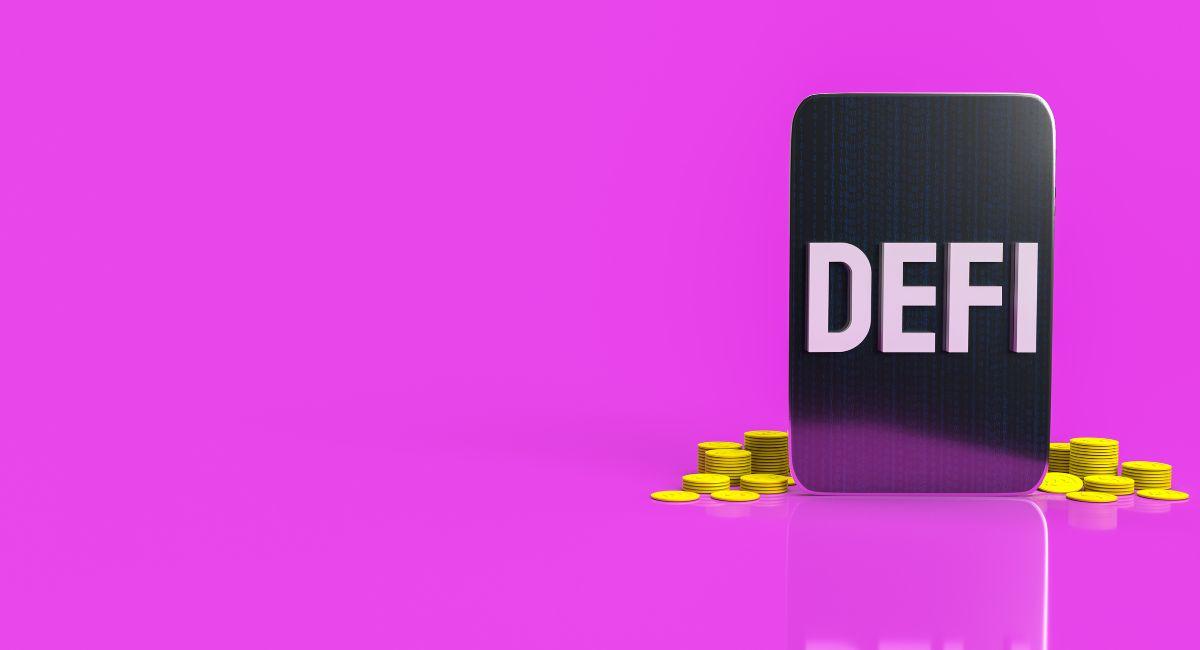Top 10 Amazing Ways Of Evaluating And Utilizing DeFi That Can Start New Investment Strategies

Decentralized Finance (DeFi) refers to a groundbreaking financial ecosystem built on blockchain technology, aiming to revolutionize traditional financial services by removing intermediaries and fostering a trustless and open environment. In the DeFi paradigm, financial transactions, lending, borrowing, and trading occur through decentralized protocols and smart contracts on blockchain platforms like Ethereum.
This allows users to access a broad array of financial services, including yield farming, liquidity provision, and decentralized exchanges, without reliance on traditional banks or financial institutions. DeFi promotes financial inclusion, transparency, and accessibility by providing a global and permissionless framework where users have direct control over their assets. Despite its transformative potential, DeFi also poses challenges such as security risks and regulatory considerations as it continues to evolve and shape the future of decentralized finance.
What is Decentralized Finance?
 Decentralized Finance (DeFi) has gained significant importance in the financial world for several reasons:
Decentralized Finance (DeFi) has gained significant importance in the financial world for several reasons:
-
Financial Inclusion:
- DeFi opens up financial services to a global audience, including those who are unbanked or underbanked. Anyone with an internet connection can access DeFi platforms, providing financial services to people who may not have had access to traditional banking systems.
-
Permissionless Access:
- Traditional financial systems often involve a lengthy and bureaucratic process to open accounts or access certain financial services. DeFi platforms are permissionless, meaning anyone can participate without requiring approval from a central authority.
-
Reduced Counterparty Risk:
- DeFi applications operate on blockchain technology, which provides transparency and immutability. Smart contracts, the self-executing contracts that power many DeFi protocols, reduce counterparty risk by automating and enforcing the terms of agreements without the need for intermediaries.
-
Liquidity and Efficiency:
- DeFi protocols facilitate peer-to-peer transactions and eliminate intermediaries, increasing the efficiency of financial processes. Automated market makers, decentralized exchanges, and liquidity pools contribute to enhanced liquidity in the market.
-
Programmability and Innovation:
- DeFi allows for programmable financial transactions through smart contracts. This programmability enables the creation of innovative financial products and services, such as decentralized lending, borrowing, and yield farming. Developers can build and iterate on financial applications more rapidly in a permissionless environment.
-
Global Accessibility:
- DeFi platforms are accessible to anyone with an internet connection, enabling global participation. This is especially important for individuals in regions with limited access to traditional banking services, as it provides an alternative and inclusive financial infrastructure.
-
Open and Transparent System:
- The transparency of blockchain technology allows users to verify transactions and track funds on the blockchain. This transparency builds trust in the system and reduces the risk of fraud or manipulation.
-
Decentralized Governance:
- Many DeFi projects incorporate decentralized governance, allowing token holders to participate in decision-making processes. This democratic approach to governance ensures that the community has a say in the development and evolution of the protocol.
-
Yield Opportunities:
- DeFi platforms offer various opportunities for users to earn yields through lending, borrowing, staking, and liquidity provision. Users can put their crypto assets to work, generating income in ways that may not be available in traditional financial systems.
Also, read- The Role Of Crypto Payment Gateways In Decentralized Finance (DeFi)
Top 10 ways investment in Defi

Decentralized Finance has transformed traditional investment landscapes by offering innovative and decentralized financial instruments. Here are key aspects of investment:
- Yield Farming:
- Investors can participate in yield farming by providing liquidity to decentralized platforms and earning interest or rewards in return. This involves lending assets to decentralized protocols to earn yields.
- Liquidity Provision:
- DeFi enables investors to contribute liquidity to decentralized exchanges and liquidity pools, earning fees and rewards based on their participation in the network’s trading activities.
- Decentralized Exchanges (DEXs):
- Investors can trade digital assets directly on decentralized exchanges without relying on traditional centralized platforms, providing greater control and reducing counterparty risk.
- Staking:
- Staking involves locking up cryptocurrency assets to support the operations of a blockchain network and earn staking rewards. DeFi platforms often facilitate staking activities, allowing investors to earn passive income.
- Tokenization of Assets:
- DeFi allows for the tokenization of real-world assets such as real estate or commodities. Investors can gain exposure to these assets through tokenized representations on blockchain networks.
- Decentralized Autonomous Organizations (DAOs):
- Investors can participate in DAOs, which are community-driven organizations where decisions are made through voting. DAO members often have voting rights proportional to their token holdings.
- Flash Loans:
- DeFi introduces flash loans, allowing investors to borrow and repay funds within a single transaction. This innovation provides liquidity for various activities like arbitrage and can be leveraged for investment strategies.
- Smart Contract Platforms:
- Investors can leverage smart contract platforms to create and execute programmable financial contracts, automating investment strategies and reducing reliance on traditional intermediaries.
- Cross-Platform Investments:
- Interoperability in DeFi enables investors to diversify their portfolios across multiple platforms seamlessly, optimizing investment strategies and risk management.
- Risk Management Tools:
- DeFi platforms offer risk management tools, such as decentralized insurance and hedging mechanisms, allowing investors to protect their assets against unforeseen events or smart contract vulnerabilities.
Yes! It is a DEX. The 1st step will be creating a Swap, & then we will go for Limit Orders. Not only tokens, but also NFTs!
— Furries 🐾 (@FurriesFrens) January 19, 2024
Our DeFi protocol is a comprehensive platform mixing various DeFi services, allowing you to maximize earnings with tokens & NFTs.
It provides a range of… pic.twitter.com/bL5qIlNlvJ
Top 8 types of Defi Tokens

DeFi, or decentralized finance, refers to a set of financial services and applications built on blockchain technology. DeFi aims to recreate and improve upon traditional financial systems by leveraging the transparency, security, and efficiency of blockchain technology. DeFi tokens are digital assets native to these decentralized finance platforms. Here are some popular types of DeFi tokens:
-
Stablecoins:
- USDC (USD Coin): A stablecoin pegged to the US dollar, providing stability and reducing volatility.
- DAI: A stablecoin created by the MakerDAO platform, maintained through over-collateralization and algorithmic adjustments.
-
Decentralized Exchanges (DEX) Tokens:
- Uniswap (UNI): Uniswap is a decentralized exchange protocol that enables users to swap various ERC-20 tokens without the need for a traditional order book.
- SushiSwap (SUSHI): Similar to Uniswap, SushiSwap is a decentralized exchange that adds additional features like yield farming and staking.
-
Lending and Borrowing Tokens:
- Compound (COMP): Compound is a lending protocol that allows users to lend and borrow various cryptocurrencies.
- Aave (AAVE): Aave is a decentralized lending platform that supports a wide range of cryptocurrencies.
-
Yield Farming Tokens:
- Yearn.finance (YFI): Yearn.finance is a decentralized platform that automatically moves funds between different lending protocols to maximize yield for users.
- Curve Finance (CRV): Curve is a decentralized exchange optimized for stablecoin trading, often used in yield farming strategies.
-
Governance Tokens:
- Maker (MKR): MKR is the governance token for the MakerDAO platform, allowing holders to vote on proposals and decisions related to the protocol.
- Compound (COMP): In addition to its role in lending, COMP is also used for decentralized governance of the Compound protocol.
-
Oracles:
- Chainlink (LINK): Chainlink provides decentralized oracles, enabling smart contracts to securely interact with real-world data.
-
Insurance Tokens:
- Nexus Mutual (NXM): Nexus Mutual is a decentralized insurance platform that allows users to purchase coverage against smart contract vulnerabilities.
-
Synthetic Assets:
- Synthetix (SNX): Synthetix enables the creation of synthetic assets on the Ethereum blockchain, allowing users to gain exposure to various assets without holding the underlying assets.
Evaluating and utilizing DeFi tokens

Evaluating and utilizing DeFi tokens effectively can indeed open doors to innovative investment strategies. Here are 10 ways to navigate the DeFi space for new investment opportunities:
- Research and Due Diligence:
- Thoroughly research DeFi projects, understanding their whitepapers, teams, and underlying technology. Evaluate factors such as security audits, tokenomics, and community support to make informed investment decisions.
- Diversification Across Protocols:
- Diversify your portfolio across different DeFi protocols to spread risk. This can include lending platforms, decentralized exchanges, yield farming projects, and governance tokens, providing exposure to various facets of decentralized finance.
- Yield Farming Strategies:
- Explore yield farming opportunities by providing liquidity to decentralized platforms. Evaluate the risk-return profile and understand the associated incentives and potential yields offered by different farming pools.
- Leverage Staking and Governance:
- Participate in staking to earn rewards or governance tokens that provide voting rights in protocol decisions. Staking can offer a passive income stream, and governance participation allows you to have a say in the project’s future.
- Flash Loans for Arbitrage:
- Utilize flash loans for arbitrage opportunities across decentralized exchanges. This involves leveraging temporary price disparities to profit from trading activities within a single transaction.
- Tokenized Assets and Real-World Assets:
- Explore platforms that tokenize real-world assets or represent ownership of traditional financial instruments. This allows you to gain exposure to a broader range of assets within the decentralized ecosystem.
- Risk Management Tools:
- Utilize decentralized risk management tools, such as insurance protocols and decentralized options, to protect your investments from unforeseen events or smart contract vulnerabilities.
- Monitoring and Analytics:
- Stay informed about the performance of your investments by using decentralized analytics platforms. Track on-chain data, liquidity metrics, and market sentiment to make data-driven investment decisions.
- Liquidity Mining and Incentives:
- Capitalize on liquidity mining programs offered by platforms. These programs often provide additional token rewards for providing liquidity, incentivizing participation in the ecosystem.
- Adaptability to Market Trends:
- Stay adaptable to evolving market trends and emerging innovations. Being aware of new protocols, features, and trends allows you to adjust your investment strategy based on the dynamic nature of the decentralized finance space.
Conclusion
In conclusion, the exploration of the top 10 amazing ways to evaluate and utilize DeFi tokens opens up a realm of possibilities for investors, heralding the advent of new and innovative investment strategies within the decentralized finance (DeFi) space. As the cryptocurrency landscape continues to evolve, the multifaceted nature of DeFi tokens provides investors with a diverse toolkit to not only assess potential investments but also to actively participate in reshaping the financial landscape. Yield farming and liquidity provision offer avenues for passive income generation, while governance participation empowers investors to shape the trajectory of DeFi protocols. Staking for rewards becomes a lucrative strategy, and decentralized lending and borrowing platforms provide opportunities for both borrowers and lenders. Flash loans and arbitrage opportunities leverage market inefficiencies, and options trading introduces a layer of sophistication to DeFi strategies. NFT-backed collateral unlocks new dimensions, and algorithmic stablecoins contribute to stable value preservation. By navigating this array of options, investors can tailor their DeFi approach, creating dynamic and resilient investment strategies in this rapidly evolving financial frontier.


























































